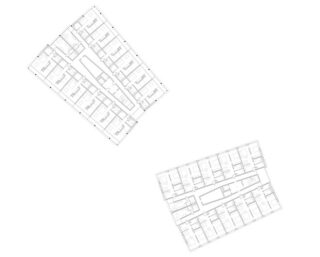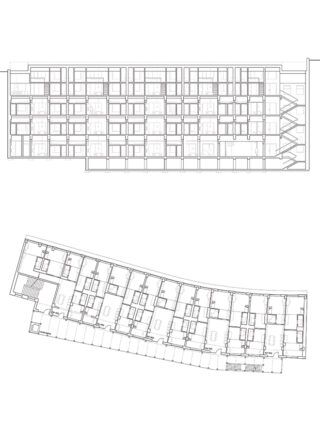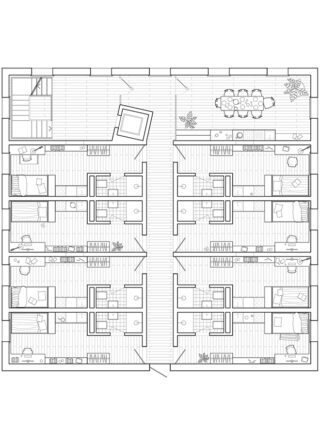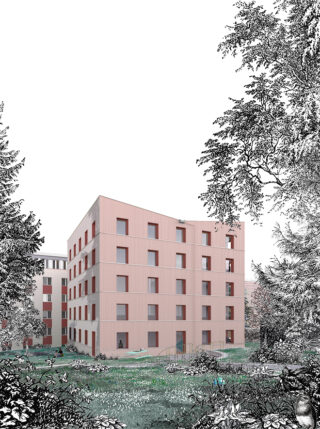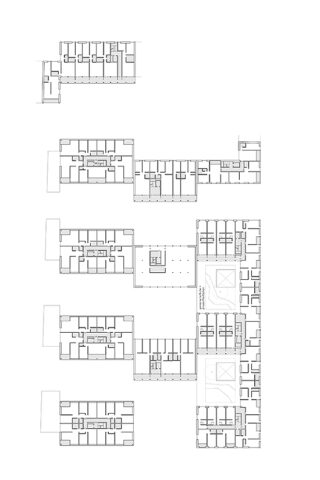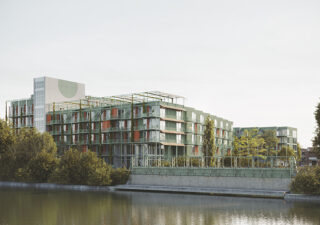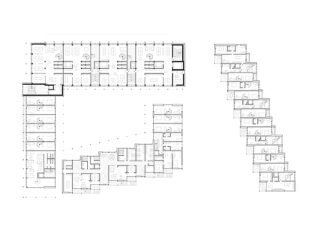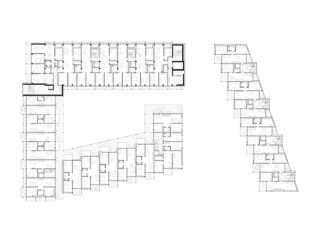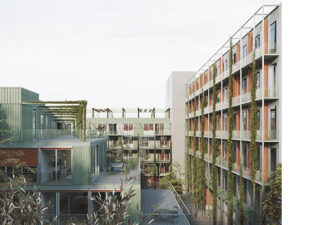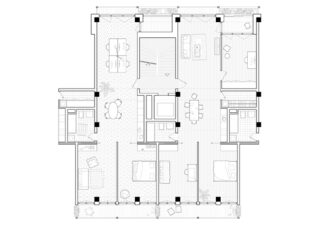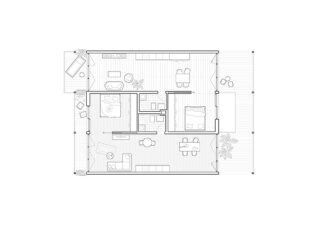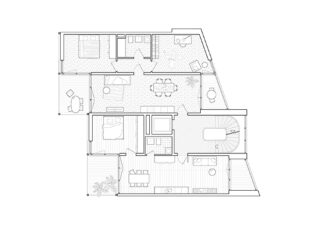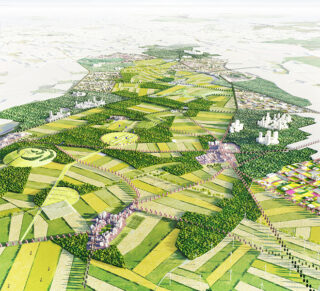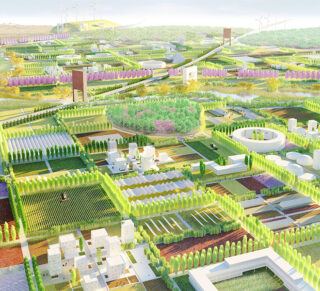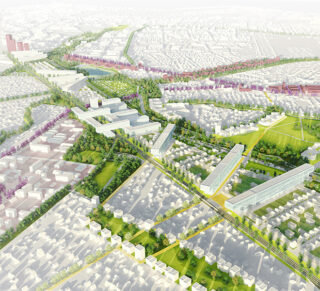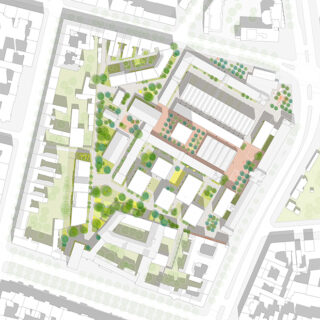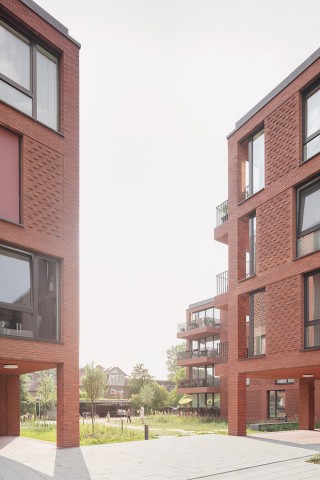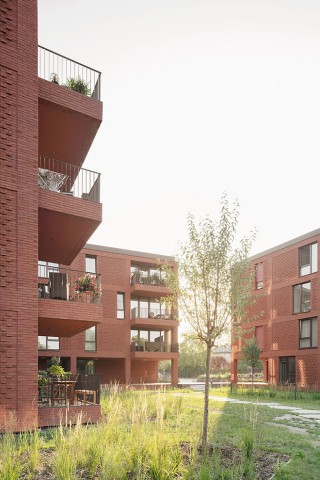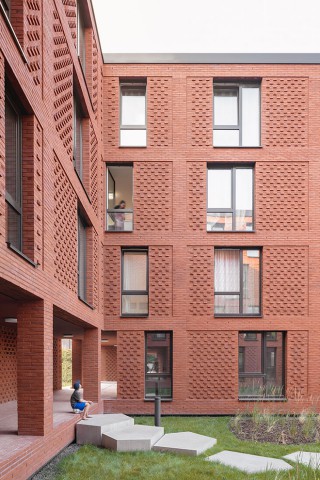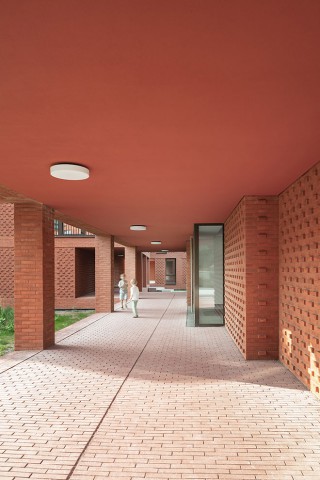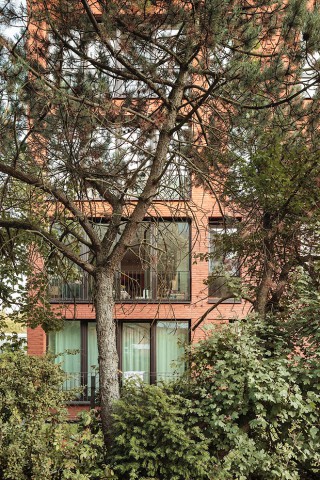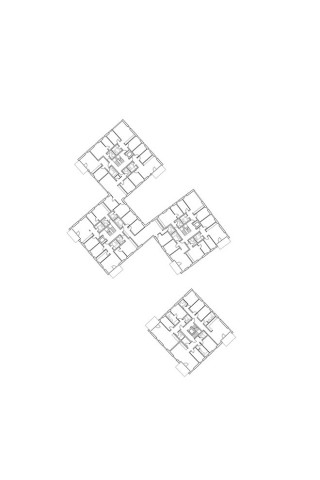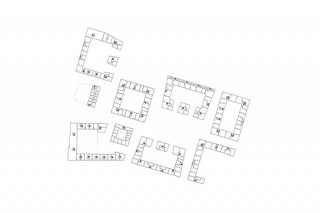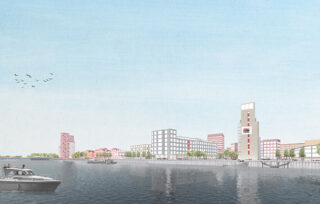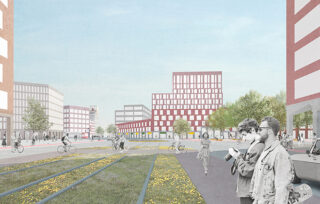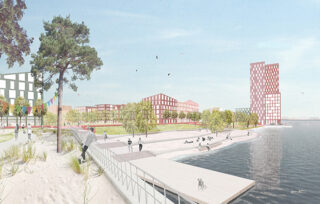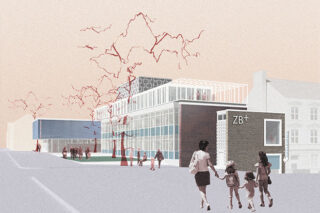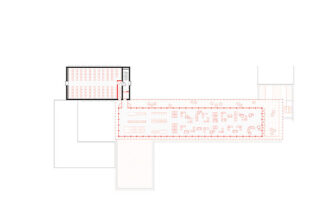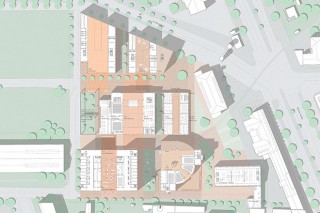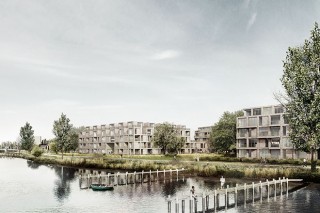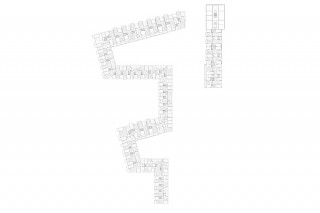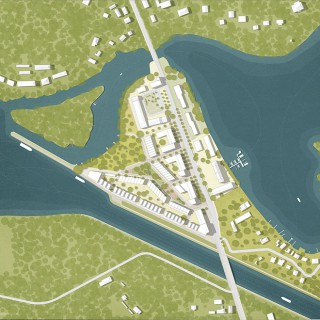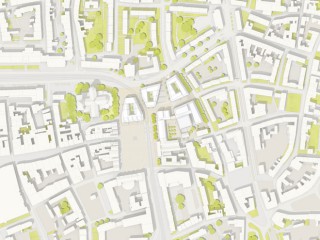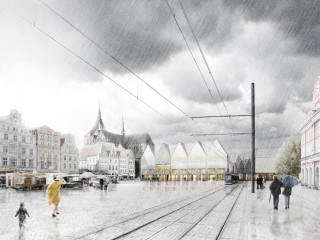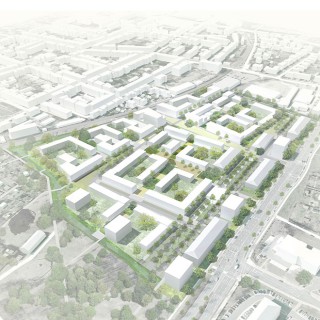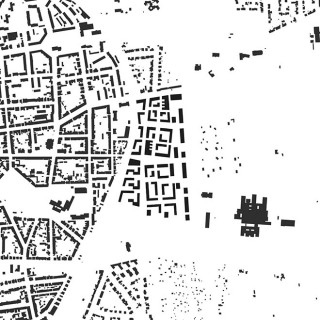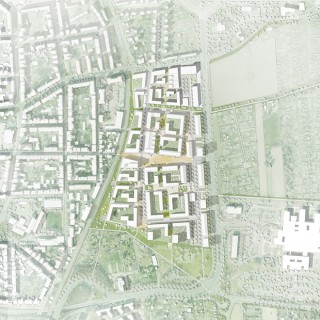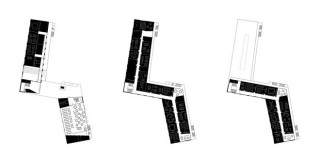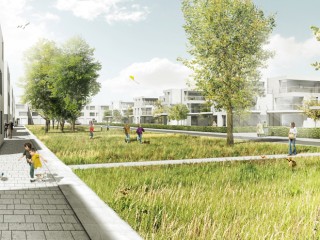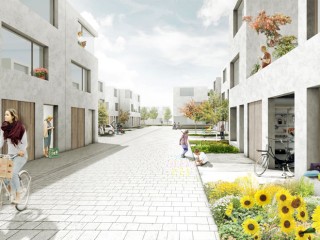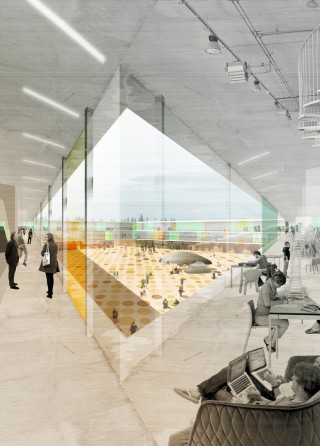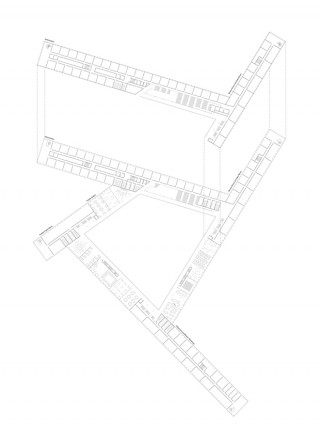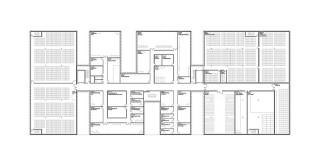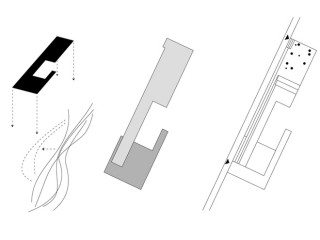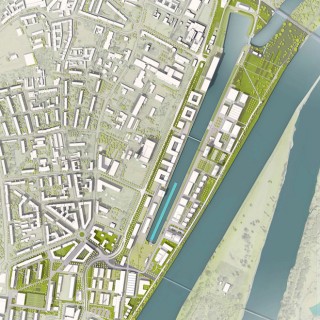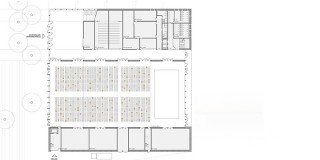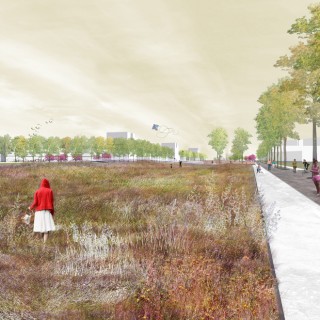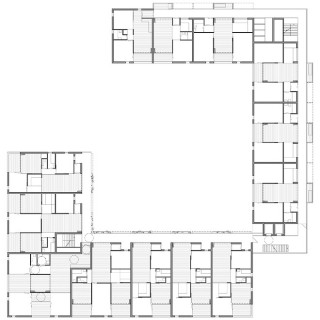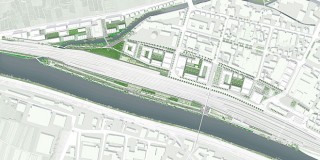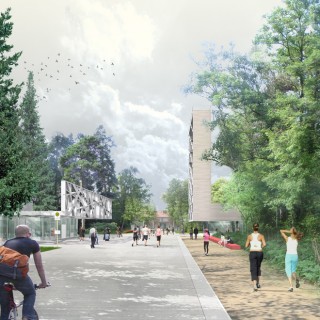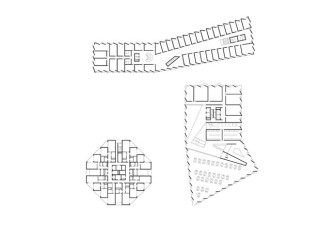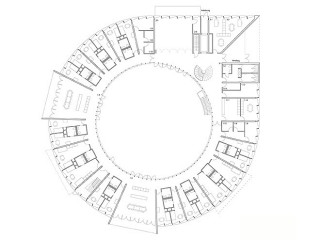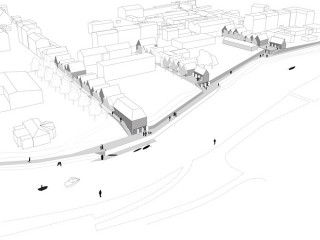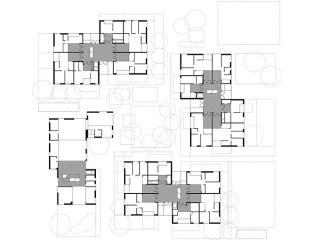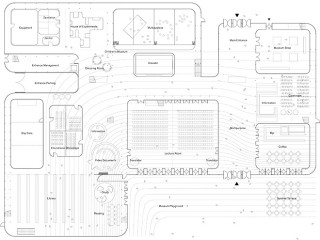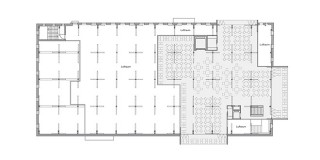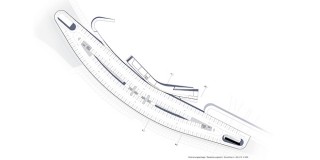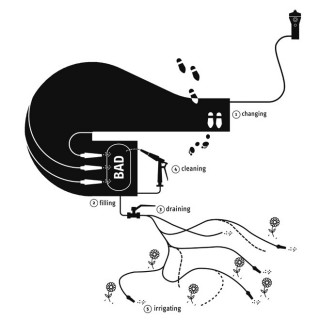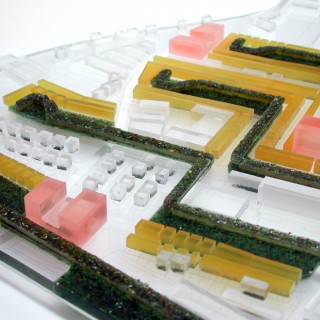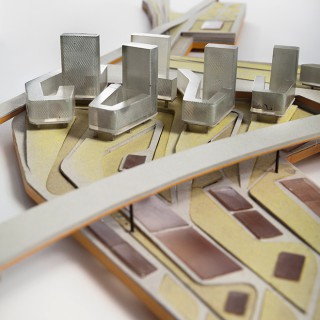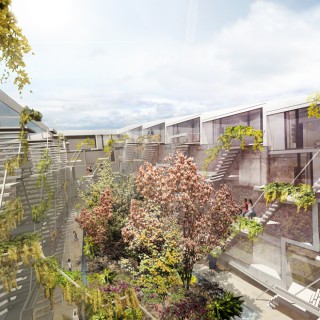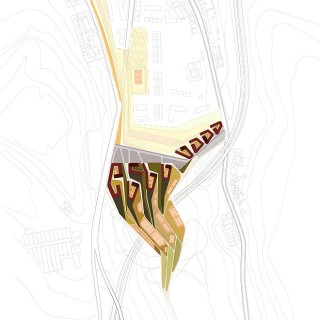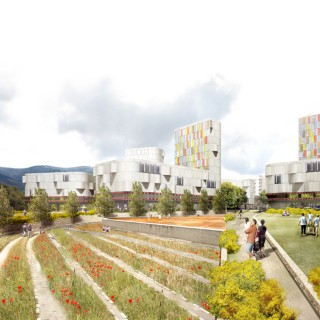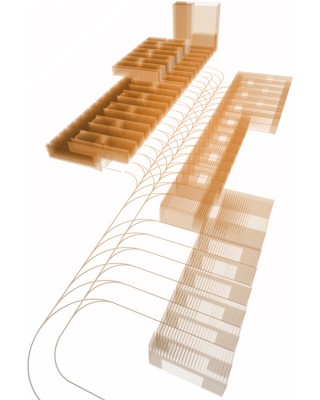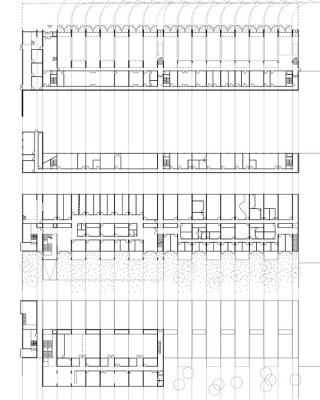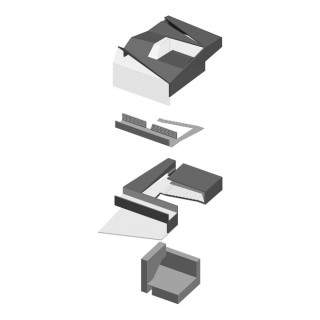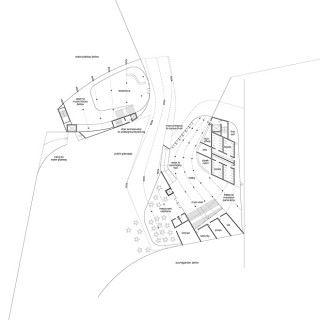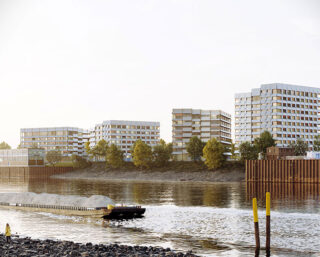
Rickmers Reismühle – Bremen, Germany
The transformation of the peninsula between the Weser River and Europahafen – the Überseeinsel in Bremen’s Überseestadt – continues to take shape. The site of the former Rickmers Rice Mill is to become a mixed-use neighbourhood with a focus on ‘housing for the elderly’. A neighbourhood concept was developed for this purpose by SMAQ with [more]
07/10/2025
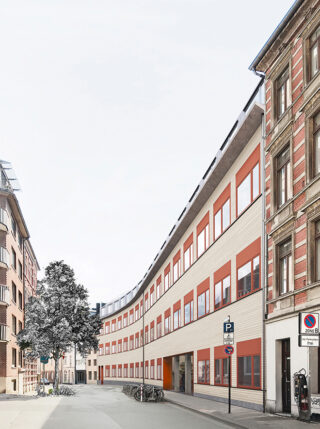
Student Housing – Aachen, Germany
The extension of the student housing complex in the city centre of Aachen will create a communicative ensemble consisting of a student residence, a garden house and a factory, with a spacious garden at its centre, to which all the new student apartments are oriented via common rooms and access. In the spirit of sustainable [more]
20/12/2024
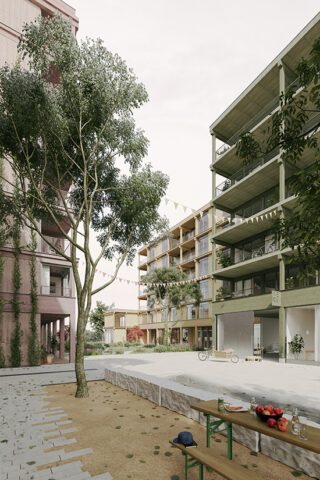
Metropolitan Village – Berlin
As a neighbourhood within a neighbourhood, the ‘Metropolitan Village’ Kiehlufer picks up on the spirit of Berlin and carries it forward. Diversity, density, accessibility, adaptability and a flexible use of space are important for the architecture of the neighbourhood within the neighbourhood. Berlin is characterised by the Berliner Block, especially in the neighbourhoods that make [more]
17/05/2024
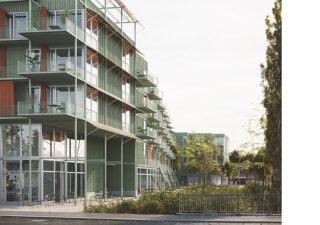
Living at the River – Stuttgart, Germany
With the International Building Exhibition IBA’27 “The Neckar as a living space”, Stuttgart should grow towards the picturesque but also productive reality of the Neckar River. At the mouth of tree-lined canal for electricity generation an urban, creative district building block with mainly residential use is be created, as well as public places to stay [more]
15/02/2022
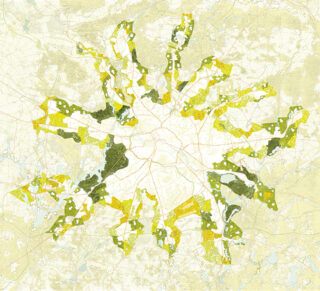
Metropolitan Ecotone – Berlin-Brandenburg
How can we envision a future of the metropolitan city-region Berlin-Brandenburg at the transition from a fossil-fuel based neo-liberal economy to a future based on ecological principles, social justice, a more diverse economy, a more generous public realm, and more effective collaboration between government and all stakeholders? Above all, planning and design projects need to [more]
16/07/2020
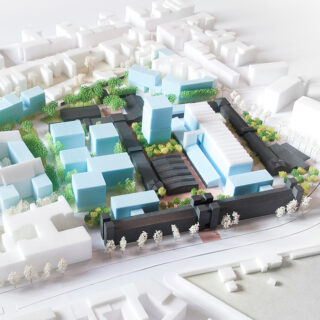
Dragoner Barracks – Berlin
The urban design for the former Dragoner Barracks in Berlin Kreuzberg and adjoining areas works out the historical difference between the former barracks and the Wilhelminian-style block edge development and at the same time creates a new expressive urban quarter. The concept offers spacious, open spaces that invite to meet and network well with the [more]
01/02/2020
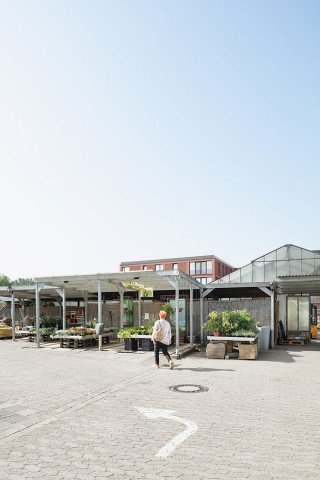
Apartment Building Agnes-Hundoegger-Weg – Hanover, Germany
The Apartment building Agnes-Hundoegger-Weg is a project of densification in the context of inner urban periphery. It is situated within a heterogeneous city block on a plot formerly used by a plant nursery, south of the city centre of Hanover (Germany). The block is located between the 19th century urban fabric of Hanover’s South, a [more]
23/09/2019
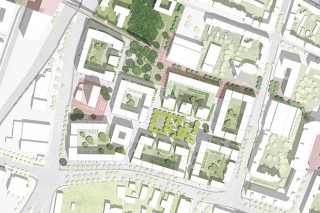
Postal Service Site – Kiel, Germany
The formal site of the postal service in Kiel Gaarden (Germany) shall be developed as a mixed-use urban city quarter for multiple forms of living and target groups and as a link between Kiel’s inner city, the fjord Hörn and the city quarter Gaarden. During the redevelopment if the site the current topographical cut into [more]
29/08/2019
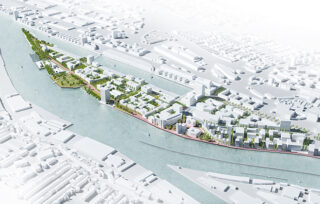
Ueberseeinsel – Bremen, Germany
Now that Kellogg’s has departed, the Überseeinsel (Overseas Island) is being built in Bremen on a peninsula site of about 41 hectares between the River Weser and the Europahafen. It links the Weser with the harbour basin, living with working, and the past with the future. Excellent location and historical substance underpin a distinctive, water-oriented [more]
01/02/2019
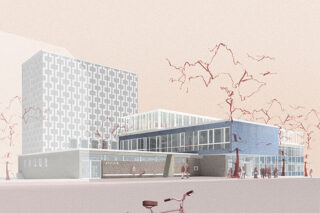
Central Library of the Future zb+ – Mönchengladbach, Germany
By extending, activating open spaces and opening up, the library acts as an ensemble of spaces with opportunities into the urban space. Taking up the dynamic configuration of the building, the rooftop extension of the reading pavilion gives the library a new presence. As an open ‘agora’ building, the library is complemented by usable outdoor [more]
28/09/2018
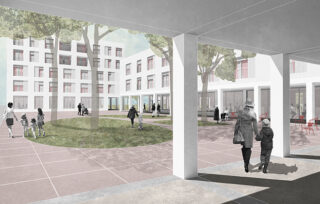
Intergenerational Centre – Neubrandenburg, Germany
The intergenerational centre is formulated as an ensemble of four, partially linked building blocks. The individual building blocks are clearly assigned to the different areas of use of the intergenerational centre. In terms of their dimensions and storeys, the buildings vary between three and five storeys. The buildings are set to complete the quarter between [more]
14/09/2018
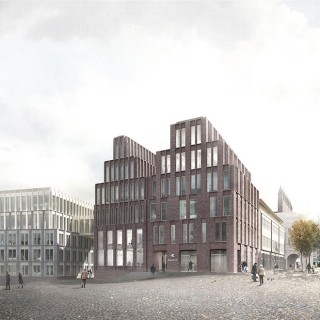
City Hall Extension – Rostock, Germany
The city hall ensemble of the Hanseatic city of Rostock is supplemented by two independent communicating buildings. The House of Citizenship formulated as northern capstone a concise facade to the future square Platz Am Schilde. The dichotomy, verticality and materiality of the historic 2-Gable-Building are picked up. The brick appearance signals the overriding public importance [more]
04/11/2017
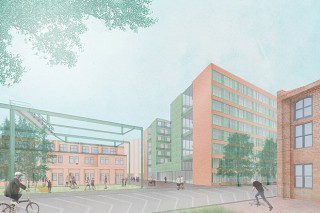
GUC Campus / Boarding House – Berlin
The campus of the GUC in Berlin is divided into three stripes. Following the tradition of the historic industrial buildings, the architecture of the boarding house picks up on the combination of steel skeleton construction and brick architecture. The U-shaped part of the building that is visible from the outside is claid with a green [more]
01/08/2017
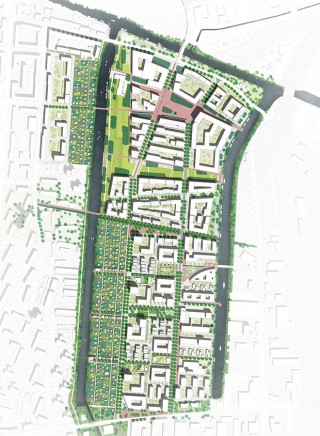
North-South-Axis – Hamburg, Germany
The project area North-South-Axis is located in the heart of the river Elbe island Wilhelmsburg and on the island between the three canals Ernst August Canal, Assmann Canal and Jaffe Davids Canal and Rotenhäuser Strasse. It covers an area of about 41 hectares. The aim of the redevelopment of this area is a vibrant, urban [more]
28/07/2016
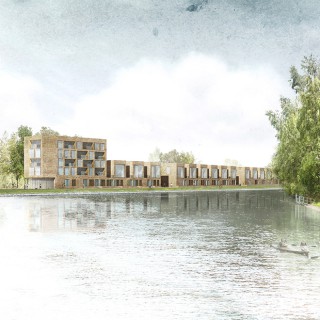
Island Neu Fahrland – Potsdam, Germany
The island Neu Fahrland, located ten minutes north of Potsdam city center shall be developed as a residential quarter. The future quarter is situated in the cultural landscape context of the River Havel: The island Neu Fahrland emerged with the construction of the Sacrow-Paretz canal and is strongly shaped by the linear section of the [more]
16/08/2015
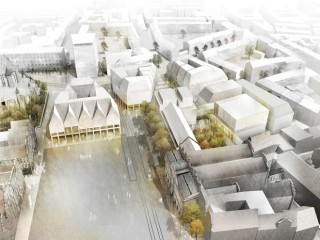
Neuer Markt – Rostock, Germany
With the development of the quarter north of the mediaeval square Neuer Markt the square shall be framed again and complemented by additional program and stand out as a place that is respecting the history of the site while being concisely contemporary.
30/09/2014
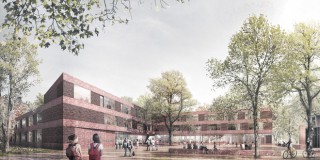
Gyula Trebitsch School – Hamburg, Germany
The Gyula Trebitsch School in Hamburg was named after the film producer Gyula Trebitsch from Hamburg who founded in proximity to the school the Studio Hamburg. The school is a neighborhood school. The development in the number of pupils makes an extension necessary. In the framework of an invited competition proposals for an extension and [more]
15/09/2014
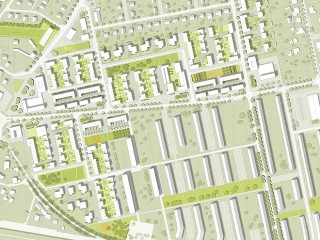
Residential Development White City – Oranienburg, Germany
The city of Oranienburg intends to develop the still largely undeveloped area north and west of what is known as the “White City”. In order to strengthen the character and context of the overall district, the design draws upon the existing lines of the White City’s existing buildings and builds on the well-proportioned streetscapes of [more]
20/04/2013
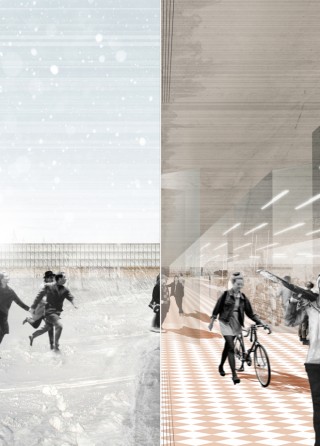
Central Campus Aalto University – Otaniemi, Finnland
A network of weather protected arcades spans from door to door and redefines the Aalto University campus landscape as a sequence of differentiated spaces cumulating in a central outdoor space. The School of Arts, Design and Architecture directs that flow up into the building, acting as a three dimensional interpretation of the square. A unique [more]
28/01/2013
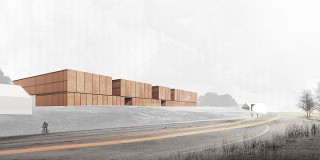
State Depot and Workshops – Schwerin, Germany
The workshop and depot building catalogs, preserves and stores the archives and artistic heritage of the state of Mecklenburg-Vorpommern. It is at once the “memory” and “treasury” of the state. The necessary storage spaces have high security requirements, and thus are neither publicly accessible nor visible to the public through windows. Hence, the exterior architectural [more]
12/09/2012
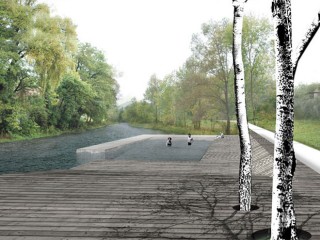
Ulsteraue – Geisa, Germany
Geisa is a small town with a historical city center in the Thurungian Rohn uplands. What is termed the city’s artisan suburb is currently highly fragmented and hardly legible, spatially. This design draws on what is still recognizable in the structure of the artisan suburb and formulates, through subtle densification, clearly readable and tangible edges [more]
01/01/2012
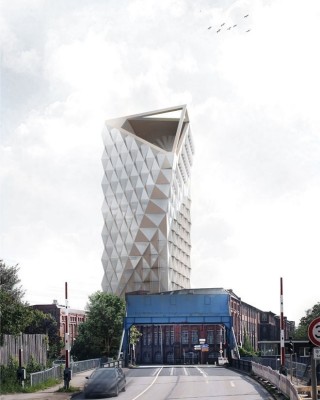
Ecocity Windtower – Hamburg, Germany
Air and air movement are taken as formative themes in the facade design for the wind-tower in the Ecocity of Hamburg-Harburg. The facade suggests multiple associations, not only in connection to the site, but also to the term “wind” in the name of the building: from the rippling of the waters’ surface in the harbour by the wind, to the rustled feathers of a bird sailing through the air. The wind-tower stretches 65 meters into the air and opens up to the west in order to take advantage of the force of the wind. The faceted façade elements reflect the height of a single story [more]
01/11/2011
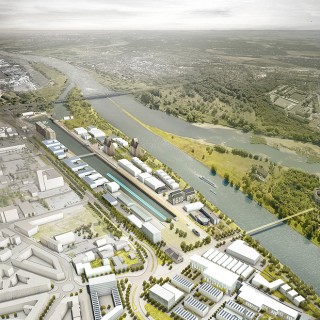
Science Port – Magdeburg, Germany
The Science Port design develops from robust and interpretable rules of adjacent local structures. A resulting system of public spaces and local networks fix the new quarter in the existing urban fabric while establishing new relations between the city centre and river compound. The existing fabric of heterogeneous structures act as a starting point to organize dispersed city [more]
01/10/2011
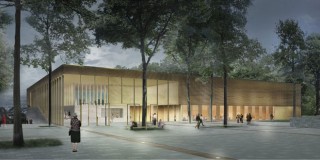
Multi-purpose Hall – Iserlohn, Germany
The multi-purpose hall activates the ridge of Alexanderhöhe, and turns, on one side, toward the park and, on the other side, toward the city. The interaction of two primary building elements, the plinth and the roof, formulate the core functions of the building, lobby and hall, as the spatial continuity of the landscape. The base is developed monolithically from the ground; a metal roof rests on top. The materiality of the plinth expresses the sedimentation of the terrain’s geology as layered ramped exposed concrete. The materiality of the roof structure makes reference to the history of the city and picks up on the art of metalworking and wire manufacturing significant [more]
01/09/2011
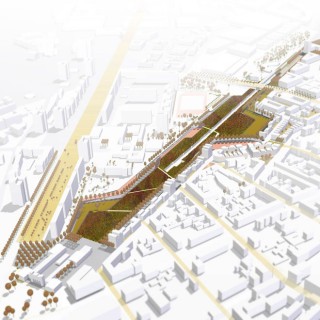
Bayrischer Bahnhof – Leipzig, Germany
The proposal for the land conversion next to the Bayrischer Bahnhof, in Leipzig, forms a distinctive landscape. The characteristically industrial area is interpreted as “wilderness” and pulled into the city. The ecological and infrastructural centre is framed in several ways: a programmed park boundary (the binding edge), the structural layout of the park-row (fragmented small-scale buildings), followed by block development. These permeable layers form a variety of visual and physical connections to the park.
01/03/2011
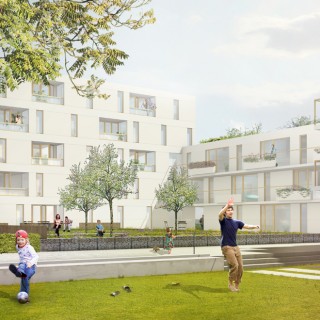
Innercity Residential Quarter – Regensburg, Germany
The sponsored pilot-project for inner-city neighbourhoods provides forward-looking proposals for 250 family-friendly homes on a former military site. The idea of the “cottage in the country” provides the basis from which the project is developed. The design offers a new building typology, grouped around common courtyards. The loose perimeter-block typology of the former barracks-area is [more]
01/02/2011
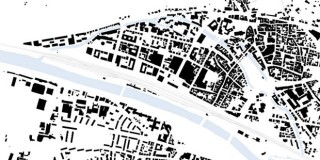
New West City – Esslingen, Germany
The New City West proposal in Esslingen on Neckar uncovers urban structures in order to promote the development of a post fossil-fuel city. Through the renewal of the historic structure in negotiation with future-oriented micro-climatic requirements and energy-use requirements, an urban texture is developed that is both porous and dense. The integral sustainability and energy conservation concepts (nature-oriented material / water management, vegetation planning, and solar orientation) interact and re-define the urban structure and form comprehensive regenerative cycles. Urban Design [more]
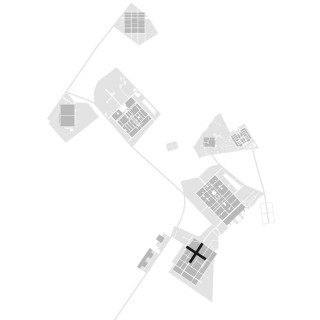
Campus PLUS – Berlin, Germany
Campus+ proposes the extension of the world renown research campus Berlin-Buch in Germany. The project develops spatial and programmatic strategies to support the development of Berlin-Buch as a top research institution. The urban concept for Campus+ is based three principles: 1. Coherent landscapes: The use of the site-specific campus organization with its three landscape/spatial typologies [more]
01/08/2010
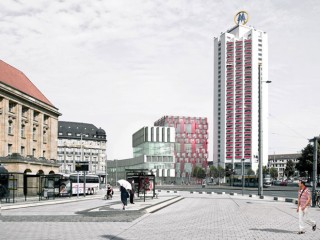
Quarter Wintergarden Tower – Leipzig, Germany
Leipzig aims to upgrade the inner city around the prominent Wintergarten Tower in direct proximity to the central station. In the urban figure TERZ (“third”) two new buildings swirl around the existing “Wintergarden Tower” and meld themselves together as a grouping on an urban square. The two proposed buildings mediate the juxtaposition of the five [more]
01/01/2010
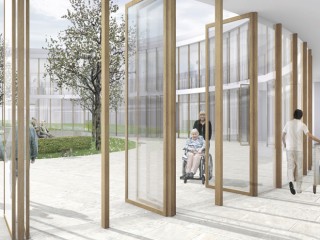
Center for Senior Citizens – Gundelsheim, Germany
The Senior Center Gundelsheim is concieved as an open building; simple and clear in structure and spatial organization. It is friendly in appearance. Community participation is supported through a generous entrance which engages communication with the city. However, there is still an opportunity to retreat into the light flooded private rooms, which have a strong connection with [more]
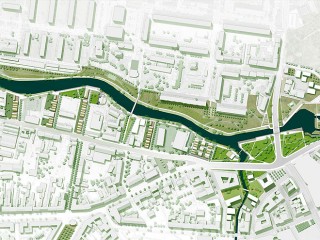
Canal Promenade – Eberswalde, Germany
The town of Eberswalde is located on the Finowkanal, an historic driving force of the cities’ prosperity. The location of the canal has not yet been pushed to its fullest potential for residents and visitors. The city and the water landscape of the canal should be brought together to improve the quality of life of [more]
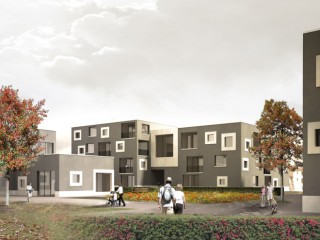
Multigenerational Housing and Kindergarten – Königsbrunn, Germany
The Multigenerational Housing Project in Königsbrunn allows for the informal cohabitation of residents young and old, mobile and handicapped, single individuals and those part of a family unit. The primary urban and architectural concept is based on providing facilities and shared surfaces necessary for community life. Organization of the housing units provide opportunities for a diverse population [more]
01/08/2009
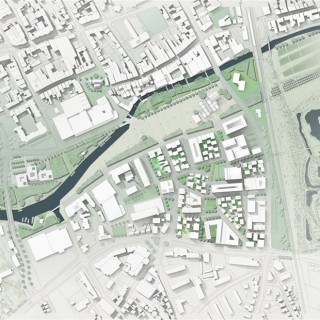
Mixed Grains – Elmshorm, Germany
Mixed Grains is a tactic to create an alter-urbanity in sites with underutilised buildings. It achieves this by accentuating the fragmentation of former industrial areas with a checkerboard of typologies and programs positioned over time. The continual generation of these moves by Mixed Grains unleashes a clash of scales, activities and environmental strategies that can [more]
01/01/2009
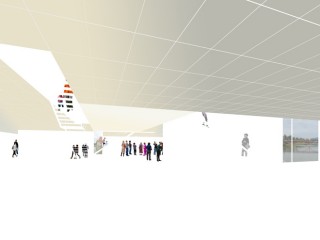
New Art Gallery UGM – Maribor, Slovenia
The New Maribor Art Gallery is conceived as a horizontal structure that foregrounds both the art exhibited and the social activities taking place within the complex. It blends into the city’s topography as well as its open space structure. The building compound is a criss-cross of visual and civic paths; in its neutral specificity it [more]
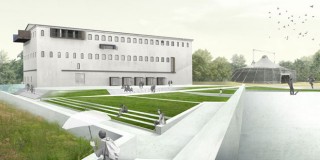
State Garden Festival 2012 – Löbau, Germany
Part of the garden show competition brief was to transform an existing sugar factory into a flower house during the garden exhibition and to create rentable event spaces after the exhibition ends. The post-industrial transformation is based on a strengthening of the impressive existing interior qualities and plays with the over-sized scale of the structure. [more]
01/01/2008
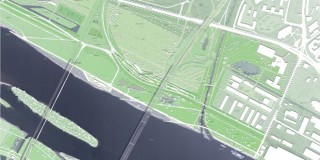
State Garden Exhibition – Deggendorf, Germany
The proposed car park acts as both building and modulated landscape. Embedded in the topography of the embankment with a flowing façade of wooden slats, the structures become a spatial counterpart to the revamped festival ground. Natural forces which shape the embankment as well as the existing railway tracks influence the plan and provide the [more]
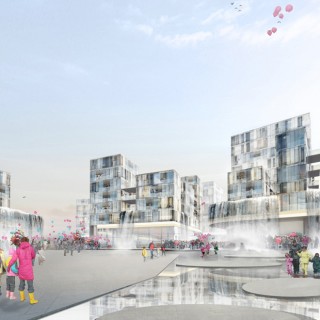
Cumulus – Grorud Center, Oslo
Cumulus is an urban strategy that conceptualizes public spaces as related to the environmental dynamics of northern living. The proposal focuses on a mixed-used development that (re)binds the different social spheres, programs, scales, and ecologies of the existing neighborhood. This manifests in a new urban center that is planned with an innovative rainwater management concept [more]
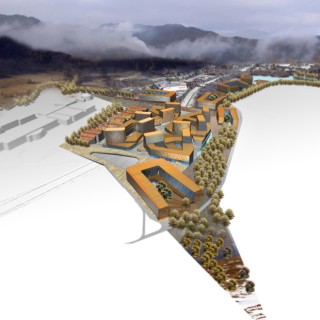
L.A.R.S – Åsane, Bergen, Norway
L.A.R.S. asks the question, how can a centre be conceived at the heart of the borough Åsane in the suburbs of Bergen, along the highway, between shopping malls, large scale businesses and suburban housing. The project is based on leisure and car related practices and declares the individual logics of suburban programs as its principle. [more]
01/02/2006
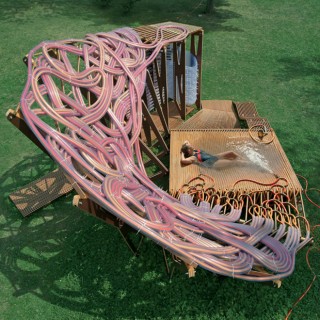
BATH – Stuttgart, Germany
BATH interprets ways of inhabiting as well as the urbanized landscape. It opportunistically joins for a brief spatial moment the circuits that have become antipodes of the contemporary environment: infrastructure and nature. It proposes an alternative, self-empowered form of leisure. BATH is composed of a 1,000-meter garden hose that plugs via a hydrant into the existing hidden [more]
01/01/2006
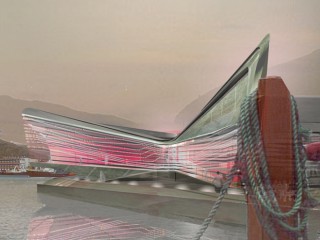
SCOOP Arctic Culture Centre – Hammerfest, Norway
The Arctic Culture Centre is an extroverted, climatically active and user-interactive bow, dynamically poised between three poles:Hammerfesttown centre, the harbour and the beach. The form reacts to local forces, intelligently using what it can from the available resources and giving back to the environment. A reflective and shiny metal skin forms a loosely layered structure [more]
01/01/2004
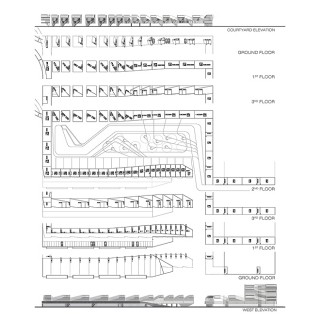
misc.Z – Krems, Austria
misc.Z intensifies an existing mixed used area at the periphery of the city Krems inAustria. Existing green areas and fallow lands are the starting point of the intervention. They will be connected and planted with willow avenues and thus form a filigree network that leads the inhabitants into the meadow landscape. Living quarters develop along this [more]
01/01/2003
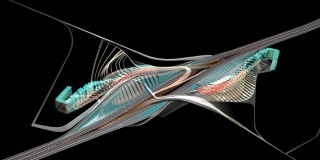
Highway…ing – Stuttgart, Germany
Highway…ing reprograms a high-speed road cutting through a larger system of leisure landscapes around Castle Solitude nearStuttgart with housing, pedestrian bridges, parking and sports facilities. As a research project it explores a sequence of car-related movements as a base for integral environmental design. An animation identifies the highway as an elastic, changeable strand of potential activities: [more]
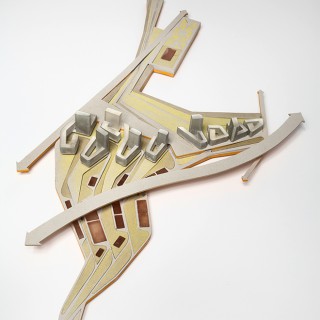
Dots&Loops – Burgos, Spain
Dots&Loops is a multiscalar project for a neglected site at Burgos’s city edge, next to an elevated highway. It investigates an intense form–environment–use relationship to transform the conflicting site conditions into opportunities. A site-specific morphology is developed by conceptualizing possible and necessary movements of inhabitation. The outcome is a lifted courtyard housing typology that adapts [more]
31/12/2002
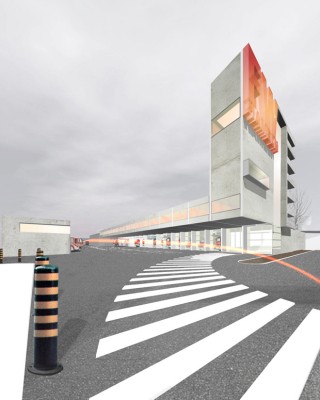
Fire Station – Hameln, Germany
Located in a mixed-used area near the centre ofHameln, the proposed fire station is a truly infrastructural building: it claims the disused railway dam as a secondary ground level and acts as a sound barrier for the residential neighbourhood. The smooth transition from the fire fighters’ common rooms, housed within a cantilevering roof to the [more]
01/01/2002
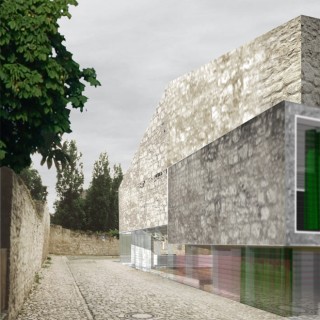
Nietzsche DokZ – Naumburg, Germany
The Nietzsche Documentation Centre is located within the well preserved historical city centre. The building envelope integrates itself into the varied roofscape of the old town and smoothly repairs the urban block structure. It acts as an active form creating precise exterior conditions and inviting spatial occasions that tie the urban realm into the ensemble. [more]
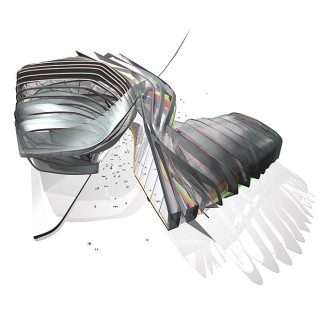
concert hall – Sarajevo, Bosnia-Herzegovina
Situated in Sarajevo’s political and cultural centre Marjin Dvor, an area that can potentially integrate old and new Sarajevo, the concert hall is thought of as a place of gathering around the performance of music – a procedure deeply tied to urban culture and thus stimulating such integration. The proposed concert hall for Sarajevo and [more]
01/01/1999
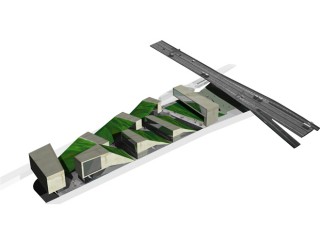
Isotop – Bern, Switzerland
Isotop is a hybrid of a motel and a sport centre tying the economical input of the larger region onto one ofBern’s peripheral sites. The project activates the existing sequence of green leisure areas typical for edge locations. Grass-covered tilted planes form the roofs of airy gymnasiums and establish the green and wide horizons of the [more]
01/01/1998
